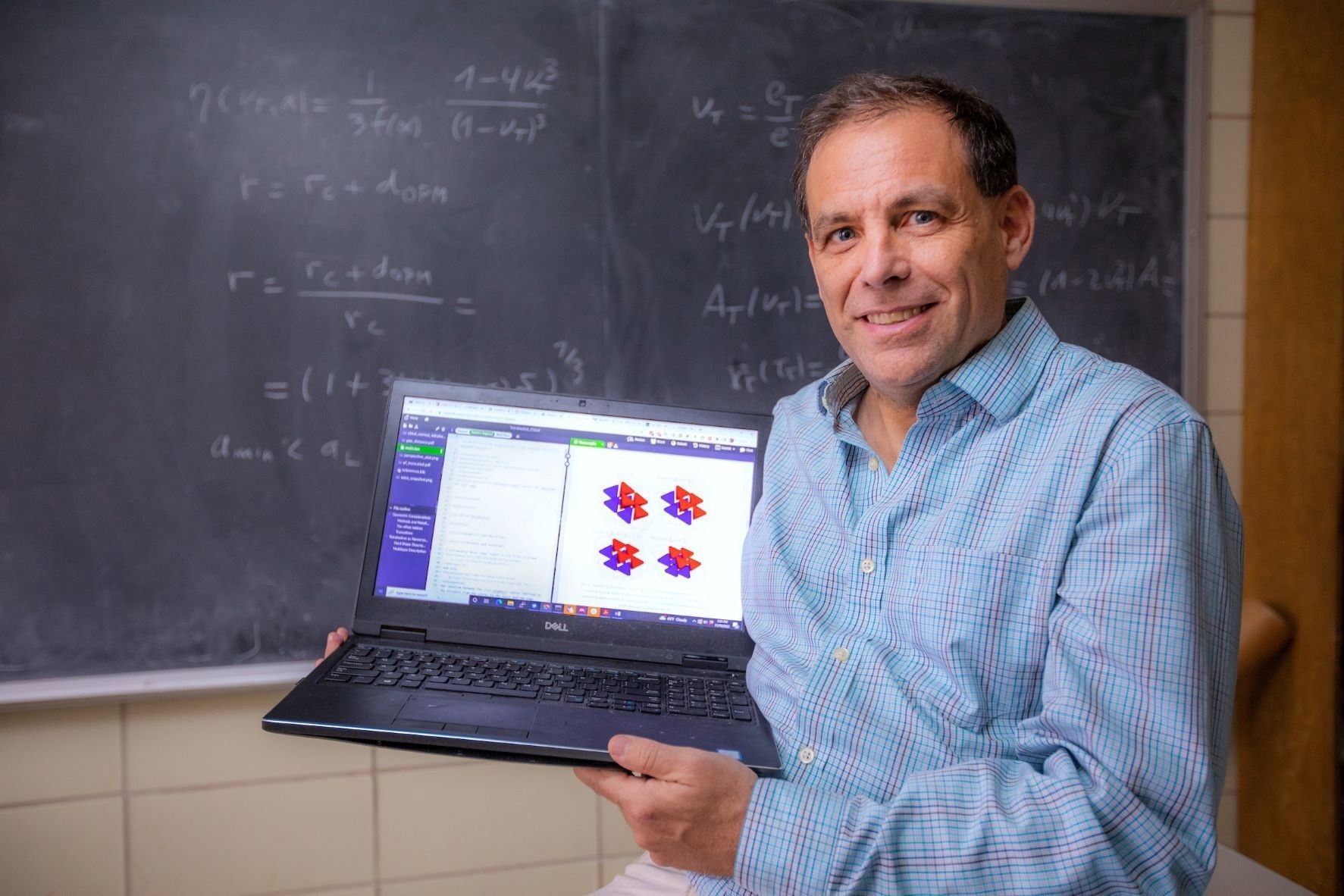Travesset is an Iowa State University professor of physics and astronomy who is also affiliated with the U.S. Department of Energy’s Ames National Laboratory. The “Chiral Tetrahedra” calculations and diagrams of Travesset are part of a research article published recently in the journal Nature.

Theoretical physicist Alex Travesset uses computer models, equations, and scientific figures to explain how nanostructures assemble. Image Credit: Christopher Gannon/Iowa State University.
These recent calculations demonstrate how regulated evaporation of a solution comprising tetrahedron-shaped gold nanoparticles on a solid silicon substrate can amass into a pinwheel-shaped, two-layered structure.
The nanostructure turns out to be chiral, meaning it does not match its mirror image. A typical example of this is a hand and its reflection. The thumbs are on opposite sides, so it is not possible for one hand to be superimposed on the other.
Travesset explains that creating a stable nanostructure possessing chiral properties is a huge accomplishment.
Scientists have been attempting to assemble chiral nanostructures for approximately 20 years—nearly as long as scientists have been examining nanostructures. Such structures could result in specially designed materials with “unusual optical, mechanical and electronic characteristics,” according to the Nature article.
During a virtual scientific conference, Travesset met the project’s lead scientists from the University of Illinois Urbana-Champaign, at which point he was not certain this new chiral structure could occur in the real world.
This was a very open structure. Usually, with nanoparticles, these structures are never stable. But this one was “held together by different types of electrostatic forces. They were unusual in their continuity.
Alex Travesset, Theoretical Physicist and Professor, Physics and Astronomy, Iowa State University
The chirality of the structure was achieved as it was sandwiched in two diverse substrates—a solid surface at the bottom and air at the top. Optical measurements carried out by the University of Michigan verified the chirality by reporting a very robust chiro-optical effect in reaction to polarized light.
This very open structure with chiral optical response was very important. People have been trying to do this for a long time. But the structure has always been unstable or not realizable. This is the first example of this having been achieved.
Alex Travesset, Theoretical Physicist and Professor, Physics and Astronomy, Iowa State University
“As a theorist working in all things nanoparticle, I have always been interested in how to assemble nanoparticle arrangements that are chiral,” Travesset said.
The “unique topology and physics” of these chiral nanostructures, “make their self-assembly from nanoparticles highly sought after yet challenging,” according to the Nature article.
Travesset said that the research team will further develop their discovery, learning a lot about the nanostructure’s features and, potentially, where they could be applied, for example in coatings for the optical sector.
For nanoparticle theorists involved with their equations, models, and figures, Travesset said there is a lot of work to be done going forward.
“Despite some successes, theory is somehow lagging behind,” he said. “We are not yet in a position where we can design nanoparticle-based materials from theoretical/computational models alone. In fact, other colleagues and I are organizing an eight-week workshop to address this challenge.”
Journal Reference
Zhou, S., et al. (2022) Chiral assemblies of pinwheel superlattices on substrates. Nature. doi.org/10.1038/s41586-022-05384-8.